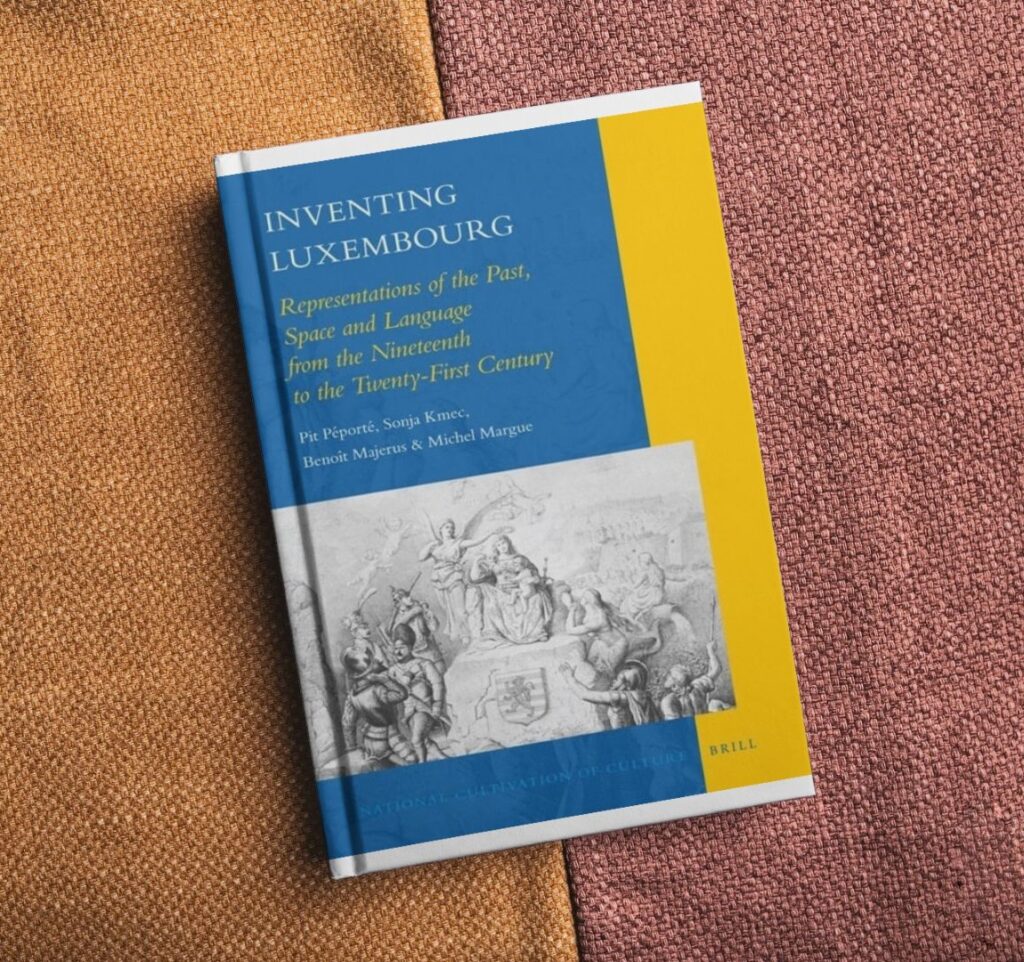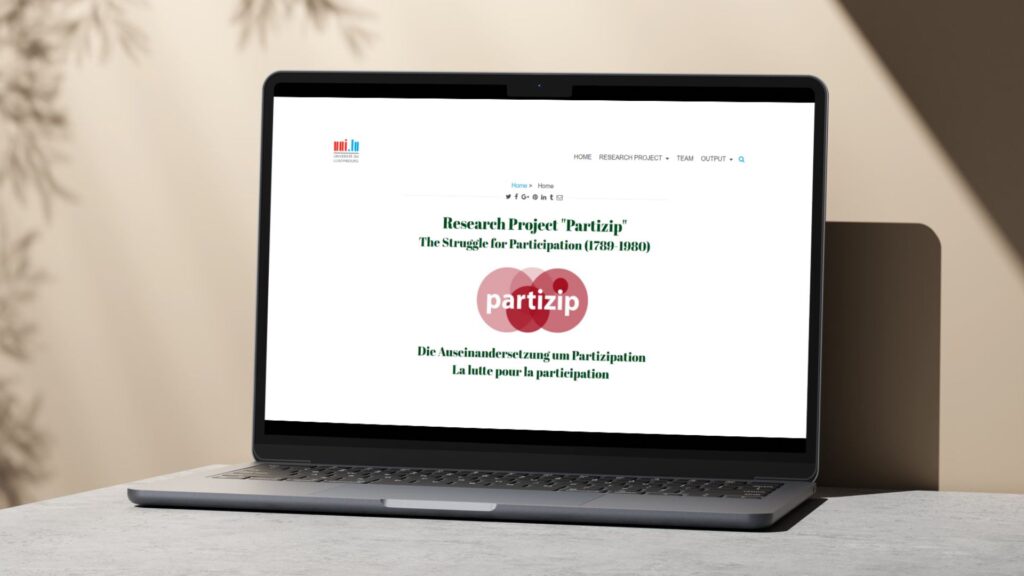BACK TO RESEARCH WITH IMPACT: FNR HIGHLIGHTS
As the FNR marks 25 years since its creation, we highlight 25 examples of FNR-supported research with impact. Over the last 20 years, Sonja Kmec has been promoting historical literacy. The cultural historian has worked on projects grounded in political and social history, with a particular focus on gender relations and migration, also looking at identity construction in Luxembourg.
“Understanding the past helps not to be overwhelmed by the present,” says Sonja Kmec, who has been Associate Professor in Cultural Studies and History at the University of Luxembourg since 2010, having returned to Luxembourg as a postdoc in 2004.
“Especially in times of rapid social and demographical change, a historical-critical analysis of past practices and beliefs allows us to better understand what has changed, how and why. ”Sonja Kmec Associate Professor in Cultural Studies and History, University of Luxembourg
By disseminating findings, in particular to students, the teachers of tomorrow, as well as stakeholders working, for example, in archives, museums and media – historians such as Kmec seek to promote what is called “historical literacy”, for example, understanding present controversies by asking questions about how they arose, and what motivates them.
Digital evolution in history research does not revolutionise methods of analysis
Digitalisation has had an enormous impact on the research field of history, making it easier to access historical source material as well as leading to new tools for analysing content and visualising results.
“However, it is a double-edged sword. With the rise of AI, basic methods of hermeneutics and critical source analysis are all the more important and will be applied to new questions as well. New insights also arise when combined with methods from other disciplines, such as cultural geography, anthropology or sociology.”

“Writing history has taken a strong digital turn and has become transmedia story-telling. While this trend cannot be ignored, my work is not seeking to merely surf the wave but to tackle underlying currents, such as the risk of minimalizing archival work and source criticism. The empirical grounding is key to building new knowledge. ”Sonja Kmec Associate Professor in Cultural Studies and History, University of Luxembourg
From politics of history to identity construction
Kmec works on memory studies and the politics of history, for example shifting meaning of monuments and nation-building, as well as processes of identity construction with a particular focus on Luxembourg. “My research is always grounded in political and social history, with a particular focus on gender relations and migration.”
Inventing Luxembourg
The first research project Kmec was involved in after returning to Luxembourg was summarised in the book “Inventing Luxembourg: Representations of the Past, Space and Language from the Nineteenth to the Twenty-First Century”. The project was led by Michel Margue and was done in collaboration with Pit Péporté, Benoît Majerus and Sonja Kmec.
“It proposed a new way of looking at historiography and the Luxembourgish nation-building process.”
This book is divided into three parts: historical narration, territory, and language, focusing on Luxembourg. It examines how historical narratives shape national, gender, ethnic, and racial identities, and how space and time influence history and geography, per Doreen Massey’s space/time concept.
Part One explores the evolution and dissemination of Luxembourg’s national narrative.
Part Two looks at how spatial representations support this narrative, distinguishing between local, national and supranational identifications.
Part Three traces the evolution of the Luxembourgish language post-1919, highlighting its role in nation-building. The book analyses nationalization trends from the late 19th century to the time of writing (published 2010).


Partizip: Exploring the history of political participation in Luxembourg
“The large-scale Partizip project, where I helped coordinate the second phase provided ground-breaking new research, for instance, into the history of Jewish people in Luxembourg (by Renée Wagener and Thorsten Fuchshuber), political participation in Luxembourg’s industry (Fabian Trinkaus and Tobias Vetterle), politics of memory (Eva Klos and Elisabeth Hoffmann) and the overlaps of gender and migration politics as witnessed by Heike Mauer’s work on prostitution.”
International cooperation delves into popular culture of the 1960s
“In the still on-going Popular Culture of the 1960s, we are able to show how the 1960s were not merely a decade of youth uprising and cultural change, but also of much more gradual shifts due to new media practices and technologies. There are also marked continuities of national and colonial narratives in popular songs, magazines and amateur films.
“It’s a large-scale FNR-DFG cooperation, with colleagues from the Institute of History, the C2DH and Saarland University. I have worked most closely with Julia Wack and Sonja Malzner.”
This project is one of several international projects Kmec has and is involved in. The FNR’s programme INTER supports Luxembourg-based researchers in collaborating with researchers in more than 20 countries.
“The FNR INTER projects were most instrumental in building solid networks with colleagues from the Saarbrücken University (DFG) as well as Groningen, Nijmegen, Oslo, Reading, UC London, Uppsala, Utrecht and UWE Bristol (HERA).”

CeMi: Conformity reigns at Luxembourg’s cemeteries
Another example of an international collaboration supported by the FNR’s INTER programme is the project CeMi, which examines the use and management of cemeteries as important but understudied public spaces. Kmec collaborated with Dr Mariske Westendorp who was based at the University of Groningen at the time. “Diversity-ready cemeteries are an area of research with many unanswered questions for Luxembourg in terms of legal, sanitary and ecological constraints as well as architectural and cultural possibilities.”
Cemeteries are multifunctional public spaces – funeral services are provided, loved ones are laid to rest – they are ‘sacred’ in the widest sense, but also frequently used as public parks – a diverse mix of people converge on these spaces of shared use.
In the CeMi project, Kmec established that in Luxembourg City’s cemeteries conformity reigns, far from reflecting the diversity of the population, exploring how this affects migrants and minorities.




One of the most diverse districts of Luxembourg City is Bonnevoie, the most populated and most multicultural district of Luxembourg. Situated behind Luxembourg’s central train station, Bonnevoie was once a neighbourhood of mainly working-class Luxembourgish and Italian, then Portuguese inhabitants.
“It is now home to a high number of migrants from all over the world and has been partially gentrified. In the streets of Bonnevoie, cultures, nationalities and religions meet and mix. This makes wandering around Bonnevoie cemetery all the more interesting. Here, the gravestones can roughly be divided into four categories – not nearly representative of the vast level of diversity that is to be seen in the street. ”Sonja Kmec Associate Professor in Cultural Studies and History, University of Luxembourg
CeMi builds on a previous project [see https://transmortality.uni.lu/] undertaken by Thomas Kolnberger and Chris Streb, which was able to prove, in the form of a material survey and quantitative analysis, how people ‘imitate’ their neighbours and how their options are limited and guided by the industry, in this case the funeral industry. CeMi, the follow-up European project compared best practices towards respecting diversity in dealing with sensitive issues such as death and mourning.
Understanding past gender stereotypes to overcome future inequalities
A lot of research is also happening in the area of gender studies. Kmec’s research on gender history has generated ample interest from public stakeholders, for example the Ministry for Gender Equality and Diversity, and has led to a longstanding cooperation with the CID | Fraen an Gender.
“These stakeholders deem that studying and teaching how gender stereotypes were constructed and overcome in the past may reduce gender inequalities in the future.”
Kmec explains that gender relations are a research area with many remaining open questions and untapped historical sources, particularly in the field of music history.
“Questions on representations of maternity and masculinity will guide my future research.”

Sonja Kmec’s FNR-funded projects (Principal Investigator / Luxembourg lead on international projects)
Across the FNR-supported projects, Kmec has supervised 5 PhD students (Sophie Neuenkirch, Tobias Vetterle, Elisabeth Hoffmann, Christoph Streb and Julia Wack) and mentored one postdoc (Sonja Malzner). She also supported two FNR Core junior fellows, Anne-Marie Millim and Sandra Camarda.
| Funding instrument | Project title | Call year |
| INTER (HERA) | 2019 | Cemeteries and Crematoria as public spaces of belonging in Europe: a study of migrant and minority cultural inclusion, exclusion and integration (CeMi) |
| CORE | 2014 | Material Culture and Spaces of Remembrance. A Study of Cemeteries in Luxembourg in the Context of the Greater Region |
| CORE | 2011 | Gesellschaftliche Partizipation und Identitätsbildung: Der Kampf um politische, wirtschaftliche und kulturelle Teilhabe in Luxemburg im europäischen Zusammenhang von den 1930er Jahren bis heute |
| CORE | 2008 | Futures and pasts in transition. Family conversations on occupational and personal ambitions and perspectives in Luxembourg |
Related highlights
25 examples of research with impact: Smart materials for a sustainable future
As the FNR marks 25 years since its creation, we highlight 25 examples of FNR-supported research with impact. Since arriving…
Read more
25 examples of research with impact: Advancing AI and Computer Vision: From space tech to better healthcare
As the FNR marks 25 years since its creation, we highlight 25 examples of FNR-supported research with impact. Since arriving…
Read more
25 examples of research with impact: Understanding the evolution of the workplace in the digital era
As the FNR marks 25 years since its creation, we highlight 25 examples of FNR-supported research with impact. Active in…
Read more
25 examples of research with impact: Breaking barriers in cancer research & treatment
As the FNR marks 25 years since its creation, we highlight 25 examples of FNR-supported research with impact. In Luxembourg…
Read more
25 examples of research with impact: Shaping the future of historical research in a digital age
As the FNR marks 25 years since its creation, we highlight 25 examples of FNR-supported research with impact Andreas Fickers…
Read more
25 examples of research with impact: Harnessing nature’s power for a sustainable future
As the FNR marks 25 years since its creation, we highlight 25 examples of FNR-supported research with impact. Since arriving…
Read more